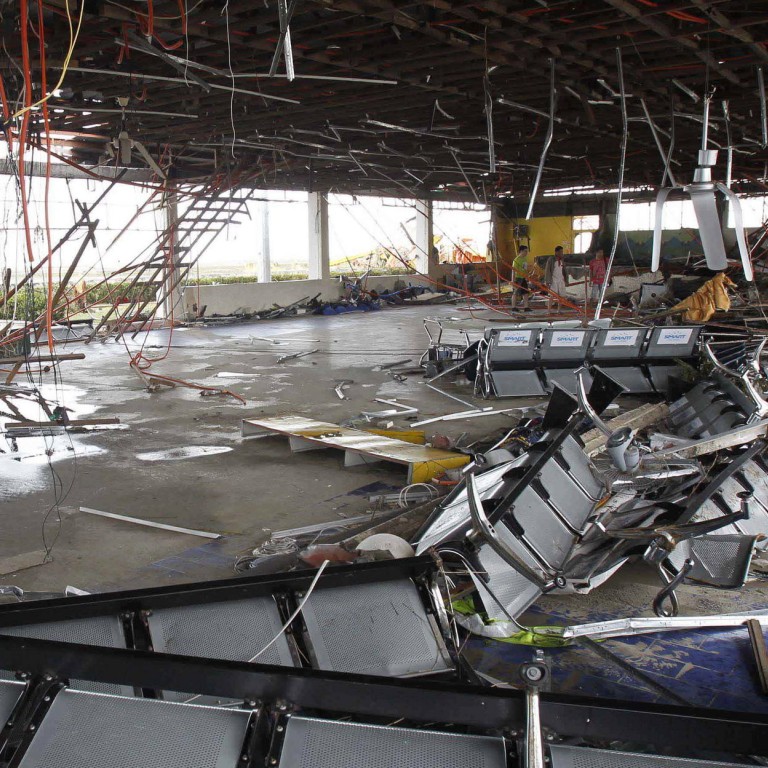
Filipinos recount terror of Typhoon Haiyan and liken impact to a tsunami
Thankful to have survived Typhoon Haiyan, but mourning their losses, Filipinos recall the fury of the gigantic storm
Amid a street littered with fallen trees and roofs ripped off in Typhoon Haiyan's fury, residents of the Philippine city of Tacloban wept as they retrieved bodies of loved ones from the devastation.
"It was like a tsunami," said Tacloban airport manager Efren Nagrama. "We escaped through the windows and I held on to a pole for about an hour as rain, seawater and wind swept through the airport. Some of my staff survived by clinging to trees.
"I prayed hard all throughout until the water subsided."
The tsunami comparison became a common theme as residents described water engulfing the city. Surrounded on three sides by the waters between Leyte and Samar islands, Tacloban was one of the places hardest hit by Haiyan.
One resident, Dominador Gullena, cried as he recounted his escape but the loss of his neighbours.
"My family evacuated the house. I thought our neighbours also did the same, but they didn't," Gullena said.
One resident said he and others took refuge inside a parked jeep, but the vehicle was swept away by a surging wall of water.
"The water was as high as a coconut tree," said Sandy Torotoro, 44, a bicycle taxi driver who lives near the airport with his wife and eight-year-old daughter.
"I got out of the jeep and I was swept away by the rampaging water with logs, trees and our house, which was ripped off from its mooring.
"When we were being swept by the water, many people were floating and raising their hands and yelling for help. But what can we do? We also needed to be helped," Torotoro said.

"A lot of the dead were scattered," he said, adding that he walked for about eight hours to reach the Tacloban airport.
Civil-aviation authorities in Tacloban, a city of 200,000, reported that the seaside airport terminal was nearly destroyed as raging seawaters shattered the glass of the airport tower and levelled the terminal.
US Marine Colonel Mike Wylie said the damage to the runway was significant but military planes were still able to land with relief aid.
Although officials started evacuating residents from low-lying areas, coasts and hilly villages as early as three days before the typhoon struck on Friday, not all heeded the call to evacuate.
"I saw those big waves and immediately told my neighbours to flee. We thought it was a tsunami," said Floremil Mazo, a villager in Davao Oriental province.
One area of concern yet to be reached was Guiuan, a fishing town of about 40,000 people on Samar that was the first to be hit after Haiyan swept in from the Pacific Ocean.
Vice-Mayor Jim Pe of Coron town on Busuanga, the last island battered by the typhoon before it blew away to the South China Sea, said most of the houses and buildings there had been destroyed or damaged.
"It was like a 747 flying just above my roof," he said, describing the sound of the winds.
On the tourist island of Cebu, at least two people were killed.
"I never thought the winds would be that strong that they could destroy my house," LynLyn Golfan of Cebu said in a television interview while sifting through the debris.

